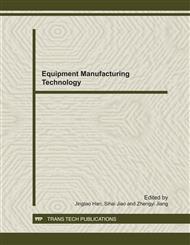p.243
p.250
p.257
p.262
p.268
p.276
p.282
p.286
p.296
Multifactor Optimization of a Fuzzy-PID Controller Using Genetic Algorithm
Abstract:
The design of a Fuzzy-PID controller involves setting the fuzzy rules, membership functions and its associated scaling factors. How to obtain a better control result and how these scaling factors affect the controller’s performance are still a challenge. In this paper, the automatic position control system of a Hille 100 experimental rolling mill was used as a research testbed. Based on the mathematical control model of the rolling mill, a Fuzzy-PID controller was developed, and the process of implementing global optimization considering all these factors simultaneously by using genetic algorithm is introduced in detail. Through simulation, the performance of the control system with multifactor optimized Fuzzy-PID controller is given, and compared with that with only the fuzzy rules optimized in the controller. By simulation tests, it is found that these factors will influence the control performance of the controller, and that they are highly coupled with each other. The more factors for a Fuzzy-PID controller are optimized, the better the solution will be. It can also be inferred from the study that asymmetrical membership functions have more potential in improving a fuzzy controller’s performance than symmetrical ones. The multifactor optimization method presented in this paper can in principle also be used to solve other complicated optimization issues.
Info:
Periodical:
Pages:
268-275
Citation:
Online since:
December 2011
Authors:
Price:
Сopyright:
© 2012 Trans Tech Publications Ltd. All Rights Reserved
Share:
Citation:


